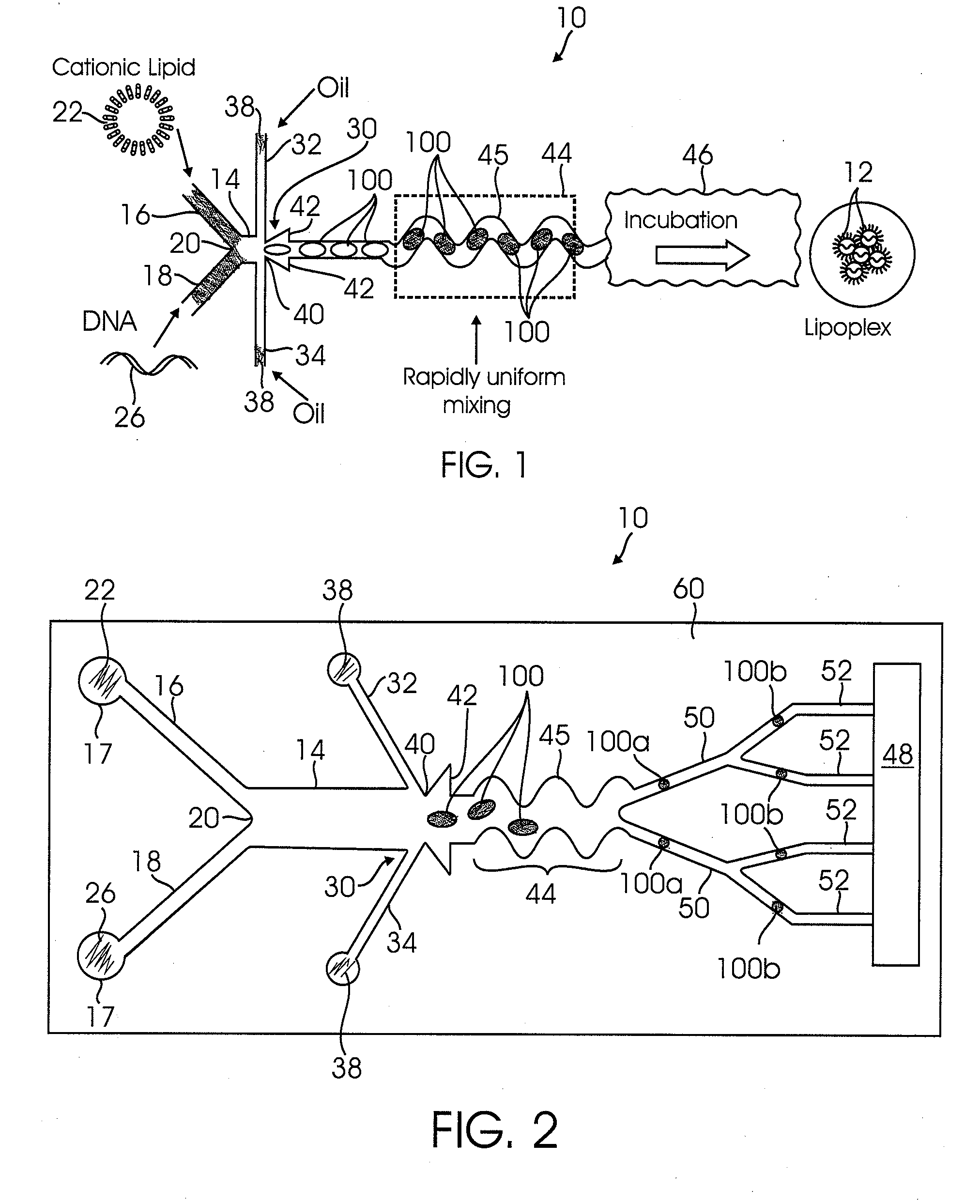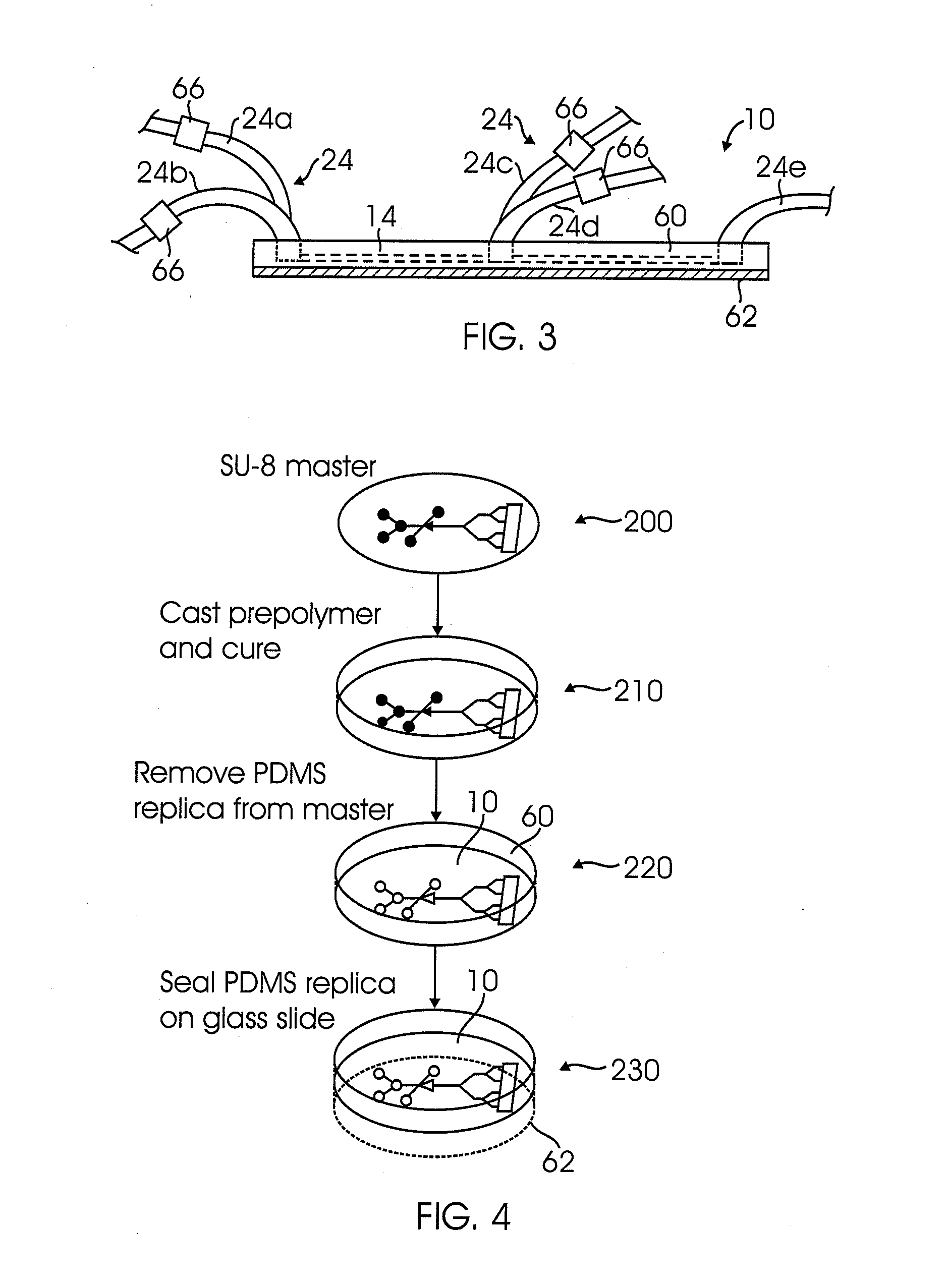Microfluidic device for forming monodisperse lipoplexes
a monodisperse, lipoplex technology, applied in the field of microfluidic devices, can solve the problems of large size distribution of lipoplexes, irreproducible characteristics of lipoplexes, adversely affecting the overall efficiency of gene transfection,
- Summary
- Abstract
- Description
- Claims
- Application Information
AI Technical Summary
Problems solved by technology
Method used
Image
Examples
Embodiment Construction
[0021]FIG. 1 illustrates a microfluidic device 10 for generating monodisperse lipoplex assemblies according to one embodiment. As used herein, the term “lipoplex assemblies” generally refers to the complex formed between a cationic lipid and nucleic acid after mixing and incubation. For example, the lipoplex assemblies may include one or more vesicles 12 that contain nucleic acid in an interior portion thereof. FIG. 1 illustrates a main microfluidic channel 14 that is connected to a first inlet channel 16 and a second inlet channel 18 via a junction 20. The first inlet channel 16 as illustrated in FIG. 1 is configured to receive a cationic lipid 22 (as illustrated in FIG. 2). The first inlet channel 16 may be coupled to a reservoir or chamber 17 that contains the cationic lipid 22. Alternatively, the first inlet channel 16 may be coupled via tubing 22 (as illustrated in FIG. 2 and which may be connected to the reservoir 17) or the like that is connected to a source of cationic lipid...
PUM
| Property | Measurement | Unit |
|---|---|---|
| Volume | aaaaa | aaaaa |
| Width | aaaaa | aaaaa |
| Force | aaaaa | aaaaa |
Abstract
Description
Claims
Application Information
 Login to View More
Login to View More - R&D
- Intellectual Property
- Life Sciences
- Materials
- Tech Scout
- Unparalleled Data Quality
- Higher Quality Content
- 60% Fewer Hallucinations
Browse by: Latest US Patents, China's latest patents, Technical Efficacy Thesaurus, Application Domain, Technology Topic, Popular Technical Reports.
© 2025 PatSnap. All rights reserved.Legal|Privacy policy|Modern Slavery Act Transparency Statement|Sitemap|About US| Contact US: help@patsnap.com



